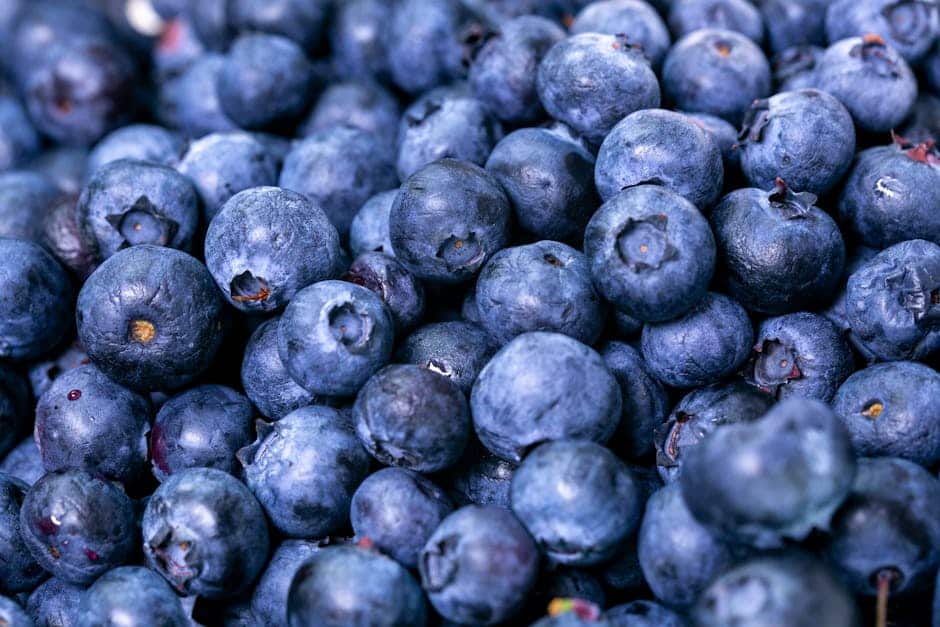Golf—where precision meets power, and the thrill of a perfect shot lingers long after the ball disappears into the horizon. It’s a sport of finesse, strategy, and undeniable obsession. But beneath the sun-soaked fairways and the satisfying thud of a well-struck drive lies a hidden truth: common golf injuries that can derail even the most dedicated golfer. From nagging aches to game-ending strains, the physical toll of golf is real—but with the right golf injury prevention strategies, it’s entirely avoidable. In this blog, we’ll dive into the common pitfalls that can turn your dream round into a painful setback and, more importantly, uncover the best ways to keep you swinging smoothly for years to come.
Golfing Back Injuries
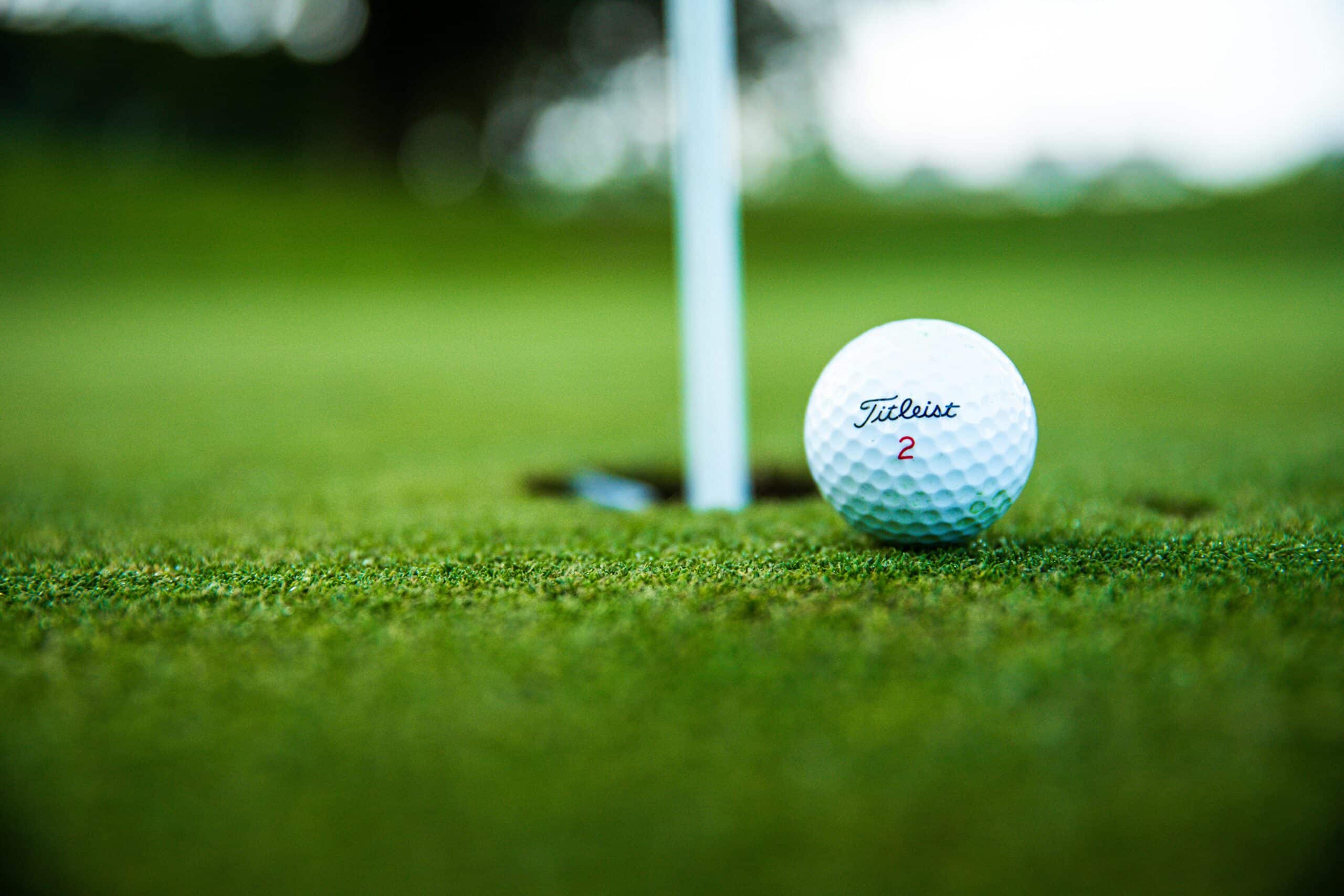
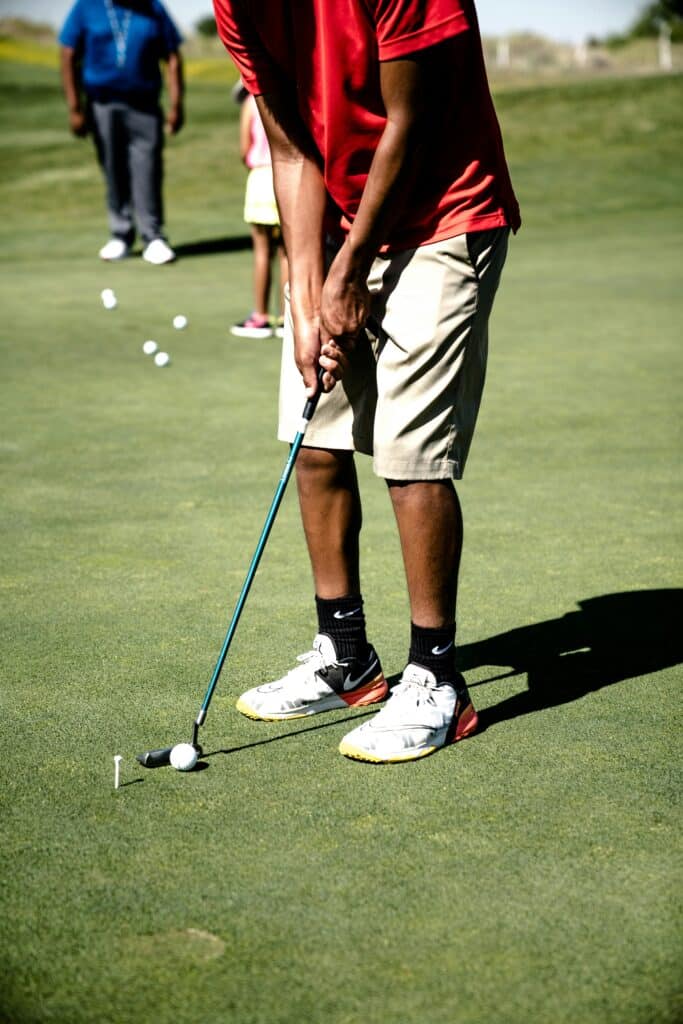
Repetitive Motion
Golf involves repetitive swinging motions, which can put a significant strain on the muscles, ligaments, and discs in the back. This repetitive motion can lead to overuse injuries, especially if proper technique and mobility is not maintained.
Twisting and Rotation
The golf swing requires a high degree of twisting and rotation of the spine. This rotational movement can place stress on the lower back, particularly if the golfer lacks proper core strength and flexibility. The twisting motion can lead to muscle strains, ligament sprains, and even disc injuries.
Poor Swing Mechanics
Incorrect swing mechanics can exacerbate the strain on the back. For example, an overly aggressive or abrupt swing can put excessive pressure on the lower back. Proper technique, including maintaining a smooth and controlled swing, is essential to reduce the risk of injury.
Inadequate Warm-Up
Failing to warm up properly before playing can increase the risk of back injuries. A proper warm-up routine helps prepare the muscles and joints for the physical demands of the golf swing. Without an adequate warm-up, the muscles and ligaments are more susceptible to injury.
Lack of Core Strength
A strong core is crucial for supporting the spine and maintaining proper posture during the golf swing. Weak core muscles can lead to poor swing mechanics and increased strain on the lower back. Strengthening the core, particularly in a rotational plane similar to a golf swing, can help stabilise the spine and reduce the risk of injury.
Overplaying and Fatigue
Playing too much golf without adequate rest can lead to fatigue and increase the risk of back injuries. Fatigue can affect swing mechanics and lead to poor posture and improper movements. It’s essential to balance play with rest and recovery.
Poor Posture
Maintaining poor posture both on and off the course can contribute to back injuries. For example, slouching or hunching over the golf club can put extra strain on the lower back. Practicing good posture and ergonomics can help reduce the risk of injury.
Carrying Heavy Golf Bags
Carrying a heavy golf bag, especially without using proper lifting techniques, can strain the back muscles. Using a cart or buggy can help reduce the load on the back and prevent injuries.
Golf Rotator Cuff Conditions
Repetitive Overhead Swinging
Golf involves repetitive overhead swinging motions, which can place significant stress on the rotator cuff muscles and tendons. The repetitive nature of the swing can lead to overuse injuries, particularly if proper technique is not maintained.
High-Intensity Shoulder Movements
The golf swing requires powerful and high-intensity shoulder movements, especially during the downswing and follow-through phases. These movements can strain the rotator cuff muscles, leading to inflammation, tears, or impingement.
Poor Swing Mechanics
Incorrect swing mechanics can exacerbate the strain on the rotator cuff. For example, an over-the-top swing or excessive use of the shoulders can increase the risk of injury. Proper technique is essential to reduce the strain on the shoulder muscles.
Lack of Warm-Up
Failing to warm up properly before playing can increase the risk of rotator cuff injuries. A proper warm-up routine helps prepare the shoulder muscles and tendons for the physical demands of the game. Without an adequate warm-up, the muscles and tendons are more susceptible to injury.
Weak Shoulder Muscles
Weak shoulder muscles can contribute to the development of rotator cuff injuries. Strengthening the shoulder muscles can help provide better support and reduce the risk of injury. Exercises that target the rotator cuff muscles can be particularly beneficial.
Age and Degenerative Changes
As golfers age, the tendons and muscles may become less resilient and more prone to injury. Degenerative changes in the tendons can make the rotator cuff more susceptible to inflammation and tears.
Overuse and Fatigue
Playing too much golf or practicing excessively without adequate rest can lead to overuse and fatigue of the shoulder muscles. Fatigue can affect swing mechanics and lead to poor posture and improper movements, increasing the risk of rotator cuff injuries.
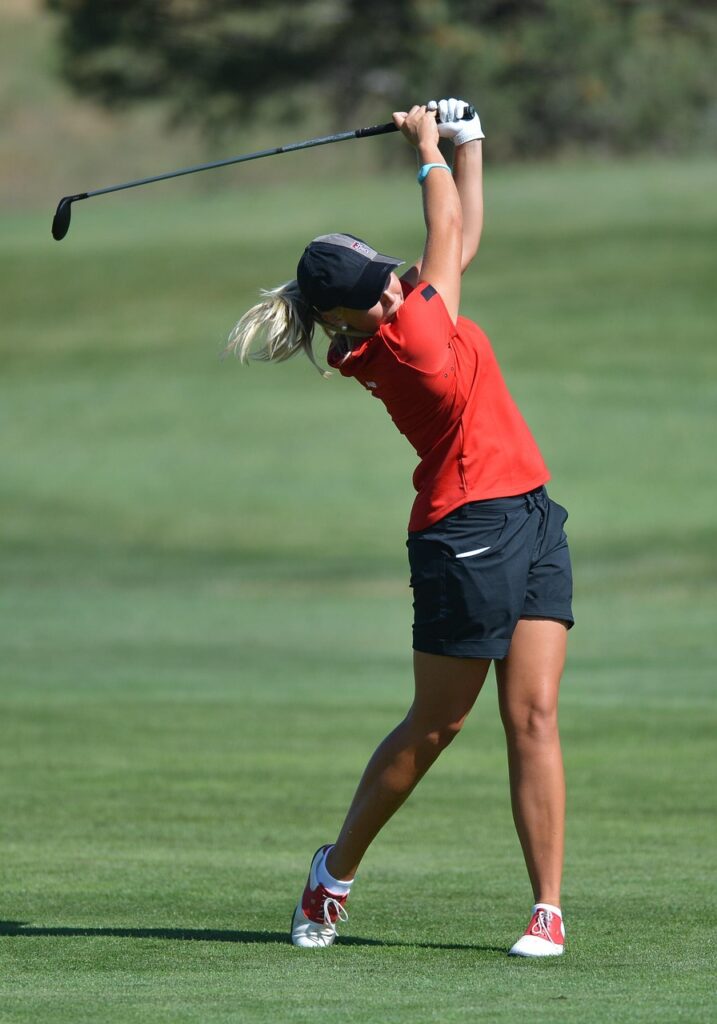
Golfing Knee Injuries
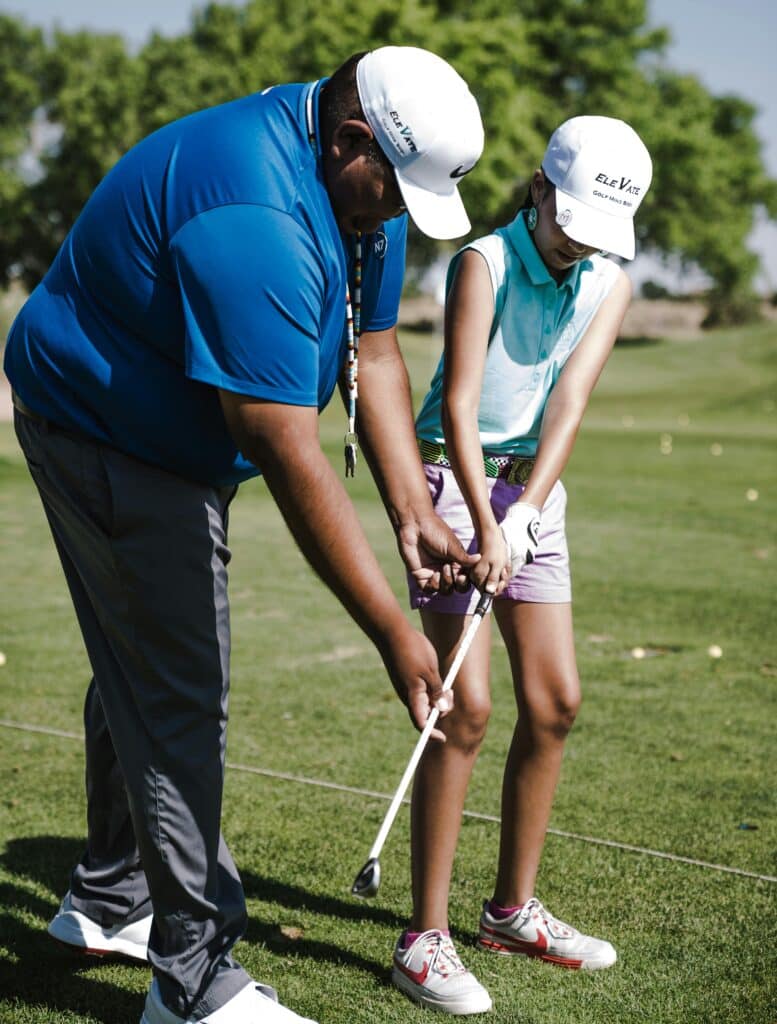
Rotational Forces
The golf swing involves significant rotational forces that can place stress on the knee joint. The twisting motion during the backswing and follow-through can strain the ligaments and cartilage in the knee, leading to injuries such as meniscus tears and ligament sprains.
Weight Transfer
During the golf swing, there is a transfer of weight from one leg to the other. This weight shift can put pressure on the knee joint, especially if the golfer has poor swing mechanics or lacks proper strength and stability in the lower body.
Overuse and Repetitive Motion
Golf involves repetitive motions, including swinging, walking, and bending. Over time, these repetitive actions can lead to overuse injuries in the knee, such as tendinopathy and bursitis. The repetitive stress on the knee joint can cause inflammation and pain.
Poor Swing Mechanics
Incorrect swing mechanics can exacerbate the strain on the knee joint. For example, an improper stance or excessive knee movement during the swing can increase the risk of injury. Proper technique is essential to reduce the strain on the knees.
Existing Knee Conditions
Golfers with pre-existing knee conditions, such as arthritis or previous injuries, are more susceptible to knee injuries. The physical demands of golf can aggravate these conditions and lead to further damage.
Lack of Strength and Flexibility
Weakness in the muscles surrounding the knee, such as the quadriceps and hamstrings, can contribute to knee injuries. Lack of flexibility in the hips and lower body can also increase the risk of injury by placing additional stress on the knee joint.
Walking on Uneven Terrain
Golf courses often have uneven terrain, including hills and slopes. Walking on these surfaces can put additional strain on the knee joint and pose as a risk of falls, increasing the risk of injury. Proper footwear and caution when navigating uneven terrain can help reduce this risk.
General Tips for Golf Injury Prevention
Tips to Prevent Back Injuries
- Proper Swing Technique: Ensure your swing technique is correct to avoid unnecessary strain. Consider taking lessons from a professional to refine your form.
- Core Strengthening: Strengthen your core muscles to support your back. In particular, add some core-based exercises in your routine that are rotational to replicate your golf swing.
- Regular Stretching and mobility: Incorporate regular stretching and mobility exercises into your routine to maintain flexibility. Focus on stretches that target the back, hips, and hamstrings.
- Use Supportive Equipment: Consider using a golf cart or buggy to avoid carrying heavy bags.
- Maintain Good Posture: Pay attention to your posture both on and off the course. Proper posture can help reduce the risk of back strain.
- Proper Warm-Up: Always warm up before playing to prepare your muscles and joints. This can include mobility exercises, stretches, and practice swings.
Tips to prevent golfer’s elbow
- Proper Warm-Up: Always warm up before playing to prepare your muscles and tendons. Simple exercises like arm circles and gentle wrist stretches can help.
- Strengthening Exercises: Strengthen your forearm muscles to reduce strain. Wrist curls and reverse wrist curls can be particularly effective.
- Bracing or Taping: Use braces or tape to support your elbow during play. This can help reduce strain and prevent injury. This is particularly important if you have had golfer’s elbow previously or have symptoms of golfer’s elbow.
- Modify Your Grip: Ensure your grip on the club is not too tight. A lighter grip can reduce stress on the tendons.
- Avoid Overuse: Limit the number of practice swings and be mindful of overuse.
Tips to Prevent Rotator Cuff Injuries
- Proper Warm-Up: Always warm up before playing to prepare your shoulder muscles and tendons. Arm swings and shoulder rotations can help get your muscles ready.
- Strengthening Exercises: Strengthen your shoulder muscles, including the rotator cuff, to reduce strain. Exercises including variations of lateral raises, push-ups or bench presses, and rows or various pull based exercises can be helpful to strengthen your rotator cuff.
- Correct Technique: Ensure your swing technique is correct to avoid overuse injuries. Consult a golf pro for lessons if you’re unsure about your form.
- Take Breaks: Avoid overuse by taking breaks and listening to your body. If you feel pain or discomfort, rest and seek medical advice if necessary.
- Maintain Flexibility: Incorporate flexibility exercises targeted to your shoulders and upper back to keep your shoulder joints healthy.
Tips to Prevent Knee Injuries
- Strengthening Exercises: Incorporate exercises that focus on the lower body muscles to stabilise the knee joint. This includes focusing on glute, quadricep, and hamstring strength.
- Flexibility Exercises: Regularly stretch or foam roll the muscles around the knee, including the quadriceps, hamstrings, and calves, to maintain flexibility.
- Proper Swing Mechanics: Work with a golf pro to ensure your swing mechanics are correct and avoid excessive knee movement.
- Supportive Footwear: Wear shoes that provide adequate support and cushioning to reduce stress on the knees.
- Use Knee Supports: Consider wearing knee braces or supports to provide additional stability. This is particularly important if you have had a previous knee injury or have symptoms of knee pain currently.
- Warm-Up and Cool Down: Always warm up before playing and cool down afterward to prepare and relax your muscles.
- Listen to Your Body: If you feel pain or discomfort, take a break and seek medical advice if necessary.
Summary
By incorporating these golf injury prevention strategies into your routine, you can safeguard your back, elbow, shoulder, and knees—allowing you to play your best without pain holding you back. A proper warm-up, cool-down, mobility routine, and gym program are crucial for optimising both your golf performance and overall health. If you’re unsure how to structure these effectively, consulting with a physiotherapist can help you develop a tailored approach to prevent common golf injuries and enhance your longevity in the sport. For more expert advice, check out this helpful guide on golf injury prevention.
Experiencing lower back pain? Don’t let it interfere with your game. Learn more about the root causes and solutions in our guide: Unlocking Low Back Pain – A Holistic Assessment.
Stay strong, stay pain-free, and enjoy every round to the fullest—happy golfing!

